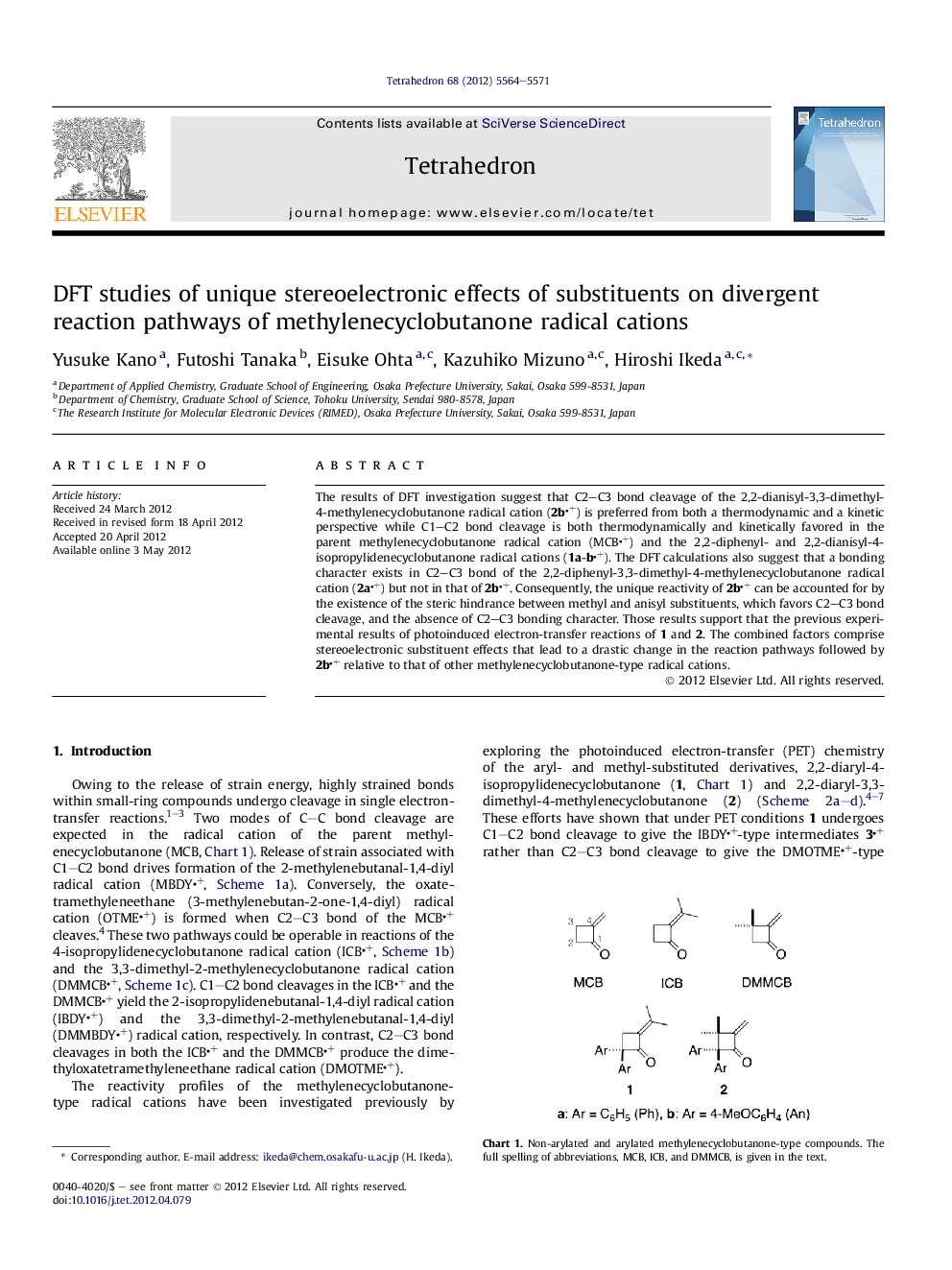| کد مقاله | کد نشریه | سال انتشار | مقاله انگلیسی | نسخه تمام متن |
|---|---|---|---|---|
| 5219248 | 1503210 | 2012 | 8 صفحه PDF | دانلود رایگان |

The results of DFT investigation suggest that C2-C3 bond cleavage of the 2,2-dianisyl-3,3-dimethyl-4-methylenecyclobutanone radical cation (2b+) is preferred from both a thermodynamic and a kinetic perspective while C1-C2 bond cleavage is both thermodynamically and kinetically favored in the parent methylenecyclobutanone radical cation (MCB+) and the 2,2-diphenyl- and 2,2-dianisyl-4-isopropylidenecyclobutanone radical cations (1a-b+). The DFT calculations also suggest that a bonding character exists in C2-C3 bond of the 2,2-diphenyl-3,3-dimethyl-4-methylenecyclobutanone radical cation (2a+) but not in that of 2b+. Consequently, the unique reactivity of 2b+ can be accounted for by the existence of the steric hindrance between methyl and anisyl substituents, which favors C2-C3 bond cleavage, and the absence of C2-C3 bonding character. Those results support that the previous experimental results of photoinduced electron-transfer reactions of 1 and 2. The combined factors comprise stereoelectronic substituent effects that lead to a drastic change in the reaction pathways followed by 2b+ relative to that of other methylenecyclobutanone-type radical cations.
Journal: Tetrahedron - Volume 68, Issues 27â28, 8 July 2012, Pages 5564-5571